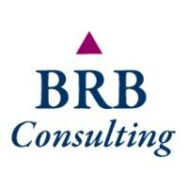Why Great Leaders Trade Their Desks for Doorways
“Get out of your office. The answers aren’t in the boardroom—they’re at the front desk, in the med room, and next to the vending machine.”
At BRB Consulting, we’ve spent years walking through programs of all shapes and sizes: outpatient mental health centers, opioid treatment providers, residential facilities for youth, supported employment agencies, you name it.
And across every setting, we’ve noticed something striking:
The biggest insights—the ones that improve care, protect rights, and raise morale—don’t usually come from reports.
They come from the floor.
The unit.
The shift report huddle.
The quiet moment after a staff member says, “I wish someone would ask what it’s really like down here.”
That’s the Gemba.
📍 So… What Is Gemba?
Gemba is a Japanese term meaning “the actual place.”
In Lean thinking, it refers to where value is created—and where truth lives.
In healthcare and human services?
Gemba is the classroom in a youth residential program.
It’s the community job site where a peer coach just backed out last minute.
It’s the dosing window at 6:00 AM in an OTP clinic, or the front desk of an outpatient mental health center juggling walk-ins, no-shows, and a paper sign-in sheet.
It’s the place where services happen.
Where stress accumulates.
Where your policies hit real-world pressure.
And where leaders rarely spend enough time.
🔍 Why It Matters—Especially Now
Since the pandemic, we’ve watched leadership in many organizations become more physically distant and operationally overloaded.
More dashboards. More reports. More Teams meetings. Less face time. Less context. Less clarity.
And then leaders ask:
- Why are staff so disengaged?
- Why isn’t our new process sticking?
- Why are we failing to meet certain standards?
The answer often isn’t in the data.
It’s at the Gemba.
When leaders show up—not to supervise, but to understand—they build trust, improve systems, and surface issues before they become survey citations or resignations.
🧠 What Gemba Looks Like in a CARF-Accredited Org
Gemba fits hand-in-glove with CARF principles and standards. Some examples:
- Behavioral Health – Residential
Visiting the common room during quiet hours may reveal environmental triggers that aren’t captured in your sensory-friendly design policy. - Opioid Treatment Programs (OTP)
Watching early-morning check-ins might uncover unintended barriers for clients balancing work, parenting, and mandatory counseling hours. - Children & Youth Services
Sitting in on a transition planning session may reveal gaps in how youth understand (or don’t) their rights and future options—despite documentation being “complete.” - Employment Services
A job developer might be struggling with employer follow-up due to outdated tech or unclear protocols—something only visible when you shadow their process. - Outpatient Programs
A walk through intake may show bottlenecks or inaccessible forms that no one upstream realizes are contributing to no-shows or disengagement.
Gemba brings the paper trail to life—and exposes the friction that happens when policy and practice don’t align.
✨ 5 Ways to Make Gemba Part of Your Leadership Practice
- Walk Without an Agenda
Show up even when there’s no crisis. Especially when there’s no crisis. Make observation part of your rhythm, not a reaction. - Ask Questions That Invite Real Answers
- “What’s been tough about your role this week?”
- “What’s one small change that would make your shift easier?”
- “What’s something your last supervisor never asked you, but should have?”
- Observe with Curiosity, Not Judgment
Gemba is not surveillance. It’s shared learning. The goal is to understand systems—not to evaluate individuals. - Look for Micro-Barriers
Maybe a hallway is always blocked. Maybe a form doesn’t save correctly in the EHR. These “little” things wear staff down. Gemba helps you see them. - Close the Loop
Don’t just observe – respond. Even a quick, “You mentioned X—I passed it on to leadership” goes a long way in building trust.
🛠️ What If You’re Remote?
You can still “go to the Gemba” even if you’re off-site. Consider:
- Virtual shadowing (with consent)
- Staff voice panels or focus groups
- Listening to unfiltered client feedback
- Reviewing process flows together on-screen, step-by-step
- Asking to see real work…not the polished version
The point is presence. Not proximity.
📋 CARF Standards That Align With Gemba
Gemba isn’t just good leadership—it’s embedded in the framework CARF expects you to uphold:
- Rights of Persons Served – Being present helps you observe how rights play out (or don’t) in daily practice
- Health & Safety – Many safety concerns aren’t in your policy—they’re in how the day actually unfolds
- Personnel – Real staff input requires relationship and visibility
- Quality Records Review – Gemba shows the story behind the data
- Leadership – Because effective leadership isn’t remote. It’s responsive.
💬 Final Thought
The best leaders go to the Gemba.
Not to fix. Not to micromanage.
But to witness.
To learn what their team already knows.
To make systems more human.
To ensure values show up where services do.
Because in healthcare and human services, the actual place is where the actual work happens.
And the best way to lead it…
is to go see it.
